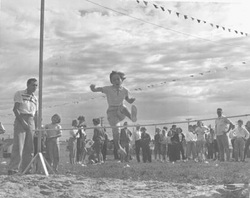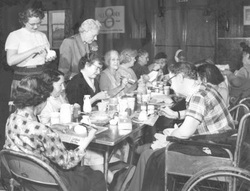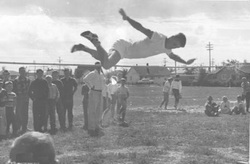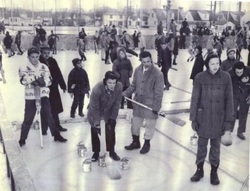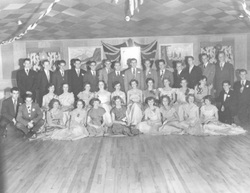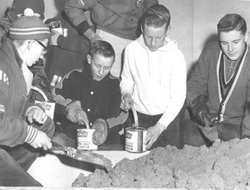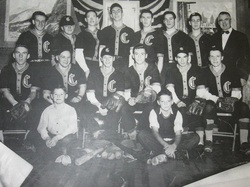Crescentwood Community Center History
Did you know?
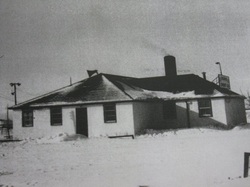
The Crescentwood area was part of the City of Winnipeg’s first official suburb. The area began to flourish once the Maryland and Osborne bridges were constructed.
Crescentwood Community Center was started with the assistance and advice of a group of Earl Grey Community Center volunteers that came over to help with the birth of our club.
The original 1945 clubhouse was actually a converted railway boxcar. Four years later, in 1949, the first true building was opened, constructed entirely by volunteers.
The Centre had a Woman’s Auxiliary up to 1979. The Auxiliary took care of finding and managing all the volunteers needed to run the club. (There were no paid employees at that time). In addition they also did most of the fundraising.
Our current version of the building was completed in 1997.
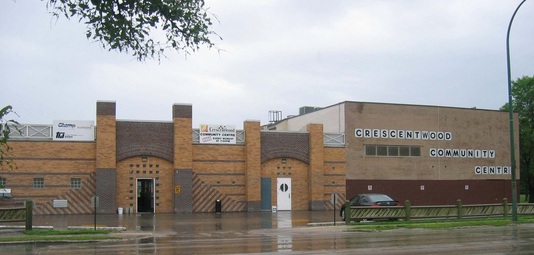
A toboggan slide was in the original 1945 future plans. It was finally erected in 2004 fifty nine years later.
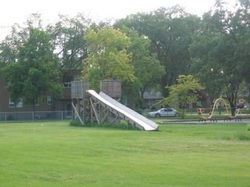
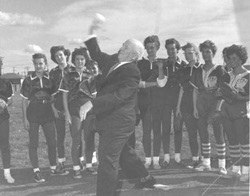
In 1945, area phone numbers were only four or five digits long. Later, when all phone numbers were converted to seven digits the conversion was often done by merely taking the existing numbers and adding one or two digits to the front.
Corydon Avenue did not originally extend past Cambridge Street. It was later curved to line up with Jackson Avenue, with the entire stretch being re-named Corydon. The Jackson Avenue name was then moved over to a street just south of Grant.
The section of Grant Avenue that passes through our area was originally a combination of Ward Avenue and the westbound C.N.R. main lines. The train lines were later moved south of Taylor Avenue. Ward was twinned and re-named Grant Avenue.
Crescentwood has been a community focal point since its inception. Some of the photos below, drawn from the Centre’s archives attest to its importance in the social and athletic fabric of the community:
Community Clubs
By John Einarson
In an effort to save money and balance the city’s ever bloated budget, it was recently suggested by some that several community clubs throughout our fair city be closed down. That possible scenario gave me pause to consider what my life would have been like without my local community club. Long before 7-11’s, shopping malls or video arcades there was the ‘club.’ Everybody knew their club, it was the hub of the community where you would meet your friends, hang out on weekend afternoons at the canteen, play organized sports of all varieties, and probably experience your first teen dance and, if you were lucky enough, your first kiss.
Winnipeg is a city of distinct neighbourhoods and community identities and nothing typified those distinctions and community spirit more than the local clubs. Ask any Winnipegger, current or expatriate, over thirty which was their own particular community club and watch as they turn misty eyed and slack jawed, grown men and women reduced to mush as they glow nostalgically and stare off in warm reflection over carefree, happier times spent at Orioles, West End Memorial, Falcon’s, Pirates, Glenwood or Riverview. If you are of that generation disparaging referred to as baby boomers then you probably grew up at a community club and the identification with our own neighbourhood club is something Winnipeggers never lose. Club loyalties were fiercely defended and the territorial rivalries often bordered on violent. Who remembers the rumbles at River Heights community club between north end and south end?
For me, my ‘club’ was Crescentwood, just a few blocks from my house up Thurso to Corydon at Rockwood, an older wood framed hall with hockey rinks, football pitches and a wading pool. Though I sometimes divided my allegiance between it and River Heights just a little further up Corydon where I later played football and often attended dances, Crescentwood holds my fondest memories. Unlike kids today, back then we walked everywhere and the jaunt up to the club was a piece of cake. Even in the middle of the harshest Winnipeg winter Mum would bundle me up in my parka and send me off to the club to watch my older brother Ron bash some unsuspecting Lord Roberts defenseman into the frozen wooden boards of the outdoor rink while I stood atop a snowbank cheering him on.
Indoor rinks? Merely a pipe dream for the young players huddled around the wood stove in the shed between periods. Playing outdoor hockey in Winnipeg required a degree of toughness hitherto unseen in today’s pampered young players. And forget parents sipping coffee and engaging in polite chit chat; outdoor rinks just naturally turned you ornery and harsh vindictives hurled at the opposing team was a way of forgetting your frozen toes if only for a few bitter moments. Hot chocolate wasn’t a luxury, it was what kept your blood from freezing in your veins.
Though I never took to the ice, constantly whining of numb feet, my father and brother were born with skates on. I can still see my Dad on the speed skating oval at Crescentwood on a windblown January afternoon gliding around the circle, hunched over, one arm tucked behind his back, the other pumping for speed. For brother Ron it was hockey. Before he even began elementary school he would be gone from sun up to sundown up at the club on the ice. The old caretaker who flooded the rink would take him into the shed just to warm his toes and share his lunch with him. If my Mum hollered out the door and Ron didn’t answer there was only one place to look for him, the club. And he wasn’t alone. There was always a group of kids to be found hanging out at the club. Me, Charlie Naccarato, Carl Pingatore, Frankie Robertson, we were Crescentwood regulars whether on the football field, baseball diamond, or sipping cokes in the canteen.
What kept the clubs going were the eager parent volunteers. When it was my Mum’s turn to take a shift in the canteen on a Saturday afternoon she’d bring me along where I’d play for hours behind the counter pretending I was running the store. Parents coached the sports teams, manned the weekly bingo, and ran the teen dances. I owe a debt of gratitude to Earl and Mabel Mills for my first contacts with the opposite sex. They hosted the Friday night Crescentwood canteen dances where I experienced my first crush and took my first tentative steps (after some hasty lessons from Ron) on the dance floor. How’s this for music history: the Deverons, featuring a cocky north end teenage whirlwind named Burton Cummings, played at my first Crescentwood dance as Randy Michalkow and I vying for Janet Brown’s attentions. Sorry Janet, for me it was the ruckus on the tiny plywood stage that held my interest.
Once I discovered that teenage girls were more impressed by a boy holding a Fender Telecaster than a football, my parents gave in to my relentless haranguing and bought me a guitar. Emerging from my basement, guitar in hand, my arrival on the world stage came via my local community club. On any given weekend night you could hear “G-L-O-R-I-A” blasting from the same tinny Bogen speakers that only a few nights before had announced “under the B-17”. It was the proving ground for every musician in this city bar none, from latter day superstars like Neil Young and Randy Bachman to upstarts like me and my buddy Mark Thiessen who boasted of actually knowing the real lyrics to Louie Louie. With a repertoire of maybe fifteen songs at best (hey, we could always repeat perennial favourites Farmer John and Walking The Dog) we took the Crescentwood stage by storm in the fall of 1966. Petrified, I was completely unnerved when my fly came undone during That’s How Strong My Love Is but still managed to get through the night with the help of a safety pin donated by an adoring female fan. Local radio personality Mal Faris hosted the dance; starstruck, the four of us asked him for his autograph at the end of the night. Hell, he pocketed more money for the gig than we did!
For stars like Bachman, Cummings, Young, and Fred Turner, whose collective record sales top 50 million, their fondest musical memories are not of Woodstock or the Fillmore but of playing Glenwood or River Heights community club dances. “The best times for me in music were those days in the community clubs,” notes Fred Turner warmly. “The first gig that I ever played was at Orioles Community Club for a soft drink and a chocolate bar.” “The strongest thing anyone was doing,” offers Cummings, “was an Export A or Players’ Plain.” My brother Ron used to Mashed Potato to Crescentwood favourites Neil Young and the Squires, their leader sporting a Beatle Wig. For me it was the Deverons, Pink Plumm, and the Orfans with their dyed blonde hair.
Having long since moved on from playing rock to writing about it, I’ve discovered that Winnipeg’s thriving music scene was unique from most other cities, and it was the neighbourhood community clubs that made it so offering grass roots music to throngs of rock ‘n’ roll starved teens. There was nothing like it anywhere else. When it came time to acknowledge local hero Cummings with a permanent marker of his Winnipeg roots, what more appropriate epithet than to name a community club in his honour, and one whose stage he often scuffed with his Beatle boots.
An acquaintance once remarked to me that if it hadn’t been for a community club he would have been a delinquent. That may have been so for a lot of us growing up in the fifties and sixties. Though the original buildings are no longer standing, whenever I drive by Crescentwood community club I can’t help but get a warm feeling inside. Maybe today’s kids need those kind of feelings too.
The End
During its history Crescentwood has been home to football , hockey, baseball soccer, rugby and basketball teams.
It has nurtured boxers, wrestlers, gymnasts, artists, quilters and story tellers. It has functioned as a bingo hall, a social hall, a polling station, a dance hall and a pool hall.
It has embraced tiny tots, youngsters, adolescents and seniors within its programs and whenever possible has opened its doors to new programs and ideas.
With continued volunteer involvement and community support the future of Crescentwood Community Centre should prove even brighter than its past.


